Visión general de Montaje de camas de construcción a alta temperatura
En el mundo de la fabricación aditiva y la impresión 3D, la base de impresión, también conocida como placa de impresión, es un componente fundamental. Pero cuando se trabaja con materiales de impresión de alta temperatura, como PEEK, Ultem o metales, una base de impresión normal no es suficiente. Ahí es donde entran en juego los conjuntos de placas de impresión de alta temperatura. Estos soportes especializados están diseñados para soportar temperaturas extremas, garantizando que sus impresiones se adhieran correctamente y no se deformen, incluso en las condiciones más exigentes.
Las cámaras de alta temperatura son cruciales para aplicaciones industriales en las que la precisión, la durabilidad y la consistencia no son negociables. Se fabrican con materiales avanzados que pueden soportar temperaturas superiores a 200 °C, a menudo integrados con calentadores, sensores de temperatura y otros componentes que ayudan a mantener el entorno perfecto para su material específico.
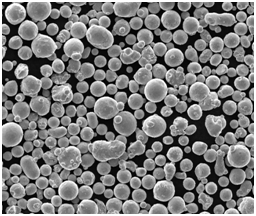
Composición del conjunto del lecho de construcción a alta temperatura
Comprender la composición de un ensamblaje de bancada de alta temperatura es clave para elegir el adecuado para su aplicación. Estos ensamblajes suelen estar hechos de una combinación de metales, cerámicas y materiales compuestos, cada uno de ellos elegido por su capacidad para soportar altas temperaturas manteniendo la integridad estructural.
| Material | Composición | Propiedades | Ejemplos de uso |
|---|---|---|---|
| Aleaciones de aluminio | Aluminio con aditivos (por ejemplo, 6061, 7075) | Alta conductividad térmica, peso ligero, resistencia moderada | Ampliamente utilizado en camas de alta temperatura de uso general |
| Acero inoxidable | Hierro, carbono, cromo, níquel | Alta resistencia, resistencia a la corrosión, menor conductividad térmica | Ideal para entornos en los que la durabilidad es clave |
| Inconel | Superaleaciones de níquel-cromo | Excepcional resistencia al calor, resistente a la oxidación | Se utiliza en aplicaciones aeroespaciales e industriales de alta precisión |
| Acero para herramientas | Carbono, tungsteno, molibdeno | Extremadamente duro, resistente al desgaste, conserva la resistencia a altas temperaturas | Adecuado para aplicaciones pesadas |
| Revestimientos cerámicos | Carburo de silicio, óxido de aluminio | Resistencia a altas temperaturas, no conductor, resistente al desgaste | A menudo se utiliza como revestimiento superior en camas metálicas |
| Compuestos de grafito | Grafito con aglutinantes de resina | Alta estabilidad térmica, excelente conductividad térmica, peso ligero | Se utiliza para procesos a temperaturas extremadamente altas |
| Aleaciones de cobre | Cobre con aditivos como el cromo | Excelente conductividad térmica, alta conductividad eléctrica | Adecuado para aplicaciones que requieren una respuesta térmica rápida |
| PEEK | Poliéter éter cetona | Elevada relación resistencia/peso, excelente resistencia química | Común en procesos especializados de impresión de plásticos |
| Ultem | Polieterimida (PEI) | Alta estabilidad térmica, ignífugo | Utilizado en las industrias aeroespacial y automovilística |
| Polímeros reforzados con fibra de carbono | Fibras de carbono en una matriz polimérica | Elevada relación resistencia/peso, rígido, resistente a la deformación a altas temperaturas | Se utiliza en aplicaciones ligeras y de alta temperatura |
Características del ensamblaje de camas de construcción a alta temperatura
Al evaluar las bases de impresión de alta temperatura, es importante tener en cuenta sus características clave, que afectarán directamente a la calidad de las impresiones y a la longevidad de la propia base de impresión.
Conductividad térmica
La conductividad térmica es crucial para una distribución uniforme del calor en la base. Metales como el aluminio y el cobre sobresalen en este ámbito, garantizando una temperatura constante, lo que es vital para evitar la deformación y garantizar una adhesión uniforme en toda la impresión.
Estabilidad térmica
Materiales como el Inconel y los revestimientos cerámicos están diseñados para ofrecer estabilidad a temperaturas extremas. Esta característica es esencial para industrias de alta precisión como la aeroespacial y la automovilística, donde incluso ligeras fluctuaciones de temperatura pueden provocar defectos.
Durabilidad y resistencia al desgaste
El acero inoxidable y el acero para herramientas son conocidos por su durabilidad, especialmente en entornos en los que la base de impresión puede estar sometida a esfuerzos físicos, como la impresión industrial de alta resistencia.
Propiedades de adherencia
La superficie de la base de impresión debe ofrecer suficiente adherencia para mantener la impresión en su lugar durante el proceso, pero también debe permitir una fácil retirada una vez finalizada la impresión. Para ello se suelen utilizar revestimientos como PEI o superficies de aluminio especialmente tratadas.
| Característica | Las mejores opciones de materiales | Importancia |
|---|---|---|
| Conductividad térmica | Aluminio, aleaciones de cobre | Garantiza un calentamiento uniforme y reduce las deformaciones |
| Estabilidad térmica | Inconel, revestimientos cerámicos | Evita deformaciones y defectos en procesos a alta temperatura |
| Durabilidad | Acero inoxidable, acero para herramientas | Garantiza la longevidad y resiste el estrés físico |
| Propiedades de adherencia | Recubrimientos PEI, Aluminio texturizado | Mejora la adherencia de la impresión, reduciendo las impresiones fallidas |
Ventajas de Montaje de camas de construcción a alta temperatura
Entonces, ¿por qué invertir en un conjunto de bancada de alta temperatura? He aquí las principales ventajas:
Precisión y calidad
Los lechos de impresión a alta temperatura permiten imprimir materiales de alto rendimiento, lo que se traduce en piezas con mejores propiedades mecánicas, resistencia al calor y rendimiento general. Esta precisión es crucial para sectores como el aeroespacial, donde el fallo de una pieza no es una opción.
Versatilidad
Estos bancos de impresión pueden procesar una amplia gama de materiales, desde termoplásticos de alta temperatura como PEEK y Ultem hasta polvos metálicos utilizados en el sinterizado directo de metales por láser (DMLS). Esta versatilidad las hace indispensables en un entorno de impresión multimaterial.
Longevidad
Materiales como el Inconel y el acero inoxidable son increíblemente duraderos, lo que significa que su base de impresión resistirá muchos ciclos de impresión sin degradarse, incluso en condiciones de altas temperaturas continuas.
Resultados coherentes
Con una conductividad térmica y una estabilidad excelentes, estos lechos proporcionan resultados uniformes, lo que es especialmente importante para la producción por lotes, en la que cada pieza debe cumplir especificaciones estrictas.
| Ventaja | Descripción |
|---|---|
| Precisión y calidad | Permite la impresión de alta precisión con materiales de primera calidad, fundamentales para las piezas de precisión |
| Versatilidad | Compatible con una amplia gama de materiales de alta temperatura, lo que mejora la capacidad de la impresora |
| Longevidad | Los materiales duraderos garantizan una mayor duración del lecho de construcción, lo que reduce los costes de sustitución |
| Resultados coherentes | Las propiedades térmicas fiables proporcionan una calidad de impresión uniforme, crucial para la producción |
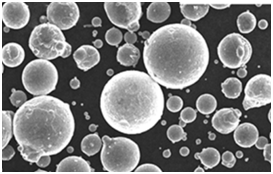


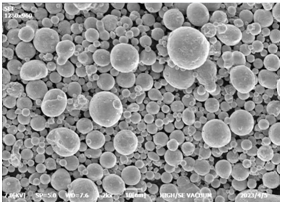
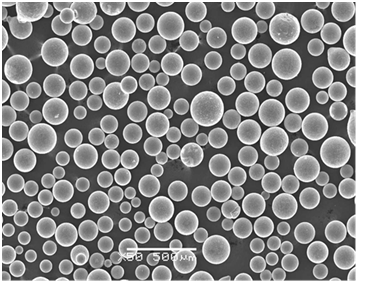

Aplicaciones del ensamblaje de camas de construcción a alta temperatura
Las cámaras de alta temperatura se utilizan en una gran variedad de industrias, cada una de ellas con exigencias y normas únicas. Estas son algunas de las aplicaciones más comunes:
| Industria | Solicitud | Material utilizado | Beneficios |
|---|---|---|---|
| Aeroespacial | Fabricación de componentes ligeros y de alta resistencia | Inconel, fibra de carbono, PEEK | Alta precisión, resistencia a la temperatura, durabilidad |
| Automotor | Producción de piezas de alto rendimiento, como componentes de motor y escudos térmicos | Acero inoxidable, Ultem | Alta estabilidad térmica, resistencia mecánica, resistencia a la corrosión |
| Productos sanitarios | Implantes y herramientas quirúrgicas a medida | Titanio, PEEK | Biocompatibilidad, precisión, esterilizabilidad |
| Electrónica | Creación de prototipos y producción de pequeños lotes de placas de circuitos y disipadores térmicos | Aleaciones de cobre, cerámica | Excelente conductividad térmica, aislamiento eléctrico |
| Petróleo y gas | Componentes para entornos de alta temperatura y presión | Inconel, acero inoxidable | Resistencia a la corrosión, alta resistencia a temperaturas elevadas |
| Defensa | Producción de componentes de armas y otras piezas sometidas a grandes esfuerzos | Acero para herramientas, Inconel | Durabilidad extrema, resistencia al calor y al desgaste |
| Energía | Piezas para turbinas, reactores y otros equipos de producción de energía | Inconel, acero inoxidable | Rendimiento a altas temperaturas, resistencia a los ciclos térmicos |
| Bienes de consumo | Artículos especializados como joyería personalizada, monturas de gafas | Acero inoxidable, PEI | Estética, precisión, durabilidad |
| Arquitectura | Carpintería metálica a medida para aplicaciones estructurales y decorativas | Aluminio, acero inoxidable | Integridad estructural, resistencia a la intemperie, flexibilidad estética |
| Robótica | Componentes para sistemas robóticos de alto rendimiento | Fibra de carbono, acero para herramientas | Ligero, resistente y térmicamente estable |
Especificaciones, tamaños, calidades y normas para conjuntos de bancadas de construcción de alta temperatura
Elegir bien ensamblaje de la bancada de alta temperatura requiere prestar atención a detalles específicos como el tamaño, la calidad y el cumplimiento de las normas del sector. He aquí un desglose de las especificaciones más comunes:
| Especificación | Detalles | Materiales típicos |
|---|---|---|
| Talla | Personalizable, los tamaños más comunes son 300x300 mm, 400x400 mm y 500x500 mm | Aluminio, acero inoxidable |
| Espesor | Oscila entre 5 mm y 20 mm, según la aplicación | Inconel, acero para herramientas |
| Grado | Las calidades de los materiales incluyen 6061 (aluminio), 304 (acero inoxidable), 718 (Inconel) | Aluminio, acero inoxidable, Inconel |
| Acabado superficial | Texturizados, recubiertos o pulidos, según las necesidades de adherencia | PEI, cerámica, aluminio |
| Capacidad de calefacción | Los calentadores integrados pueden oscilar entre 100 °C y 400 °C | PEEK, Ultem, Acero inoxidable |
| Normas de cumplimiento | ASTM, ISO, o normas industriales específicas como ASME, FDA para uso médico | Varía según el sector |
Proveedores y precios de los conjuntos de bancada de alta temperatura
A continuación le ofrecemos una instantánea de algunos de los principales proveedores del sector, junto con información sobre precios para ayudarle a tomar una decisión informada.
| Proveedor | Material ofrecido | Precios | Notas |
|---|---|---|---|
| McMaster-Carr | Acero inoxidable, aleaciones de aluminio | 100 $ – 500 $ por hoja | Bueno para camas de alta temperatura de uso general |
| Protolabs | Inconel, acero para herramientas | 500 $ – 2000 $ por montaje | Construcciones personalizadas de alta precisión |
| Grainger | Aluminio, acero inoxidable | 200 $ – 800 $ por hoja | Ofrece una amplia gama de tamaños y grosores |
| Sistemas 3D | PEEK, Ultem | $1000 – $5000 por montaje | Especialista en camas termoplásticas de alto rendimiento |
| EOS | Inconel, fibra de carbono | 3000 $ – 10000 $ por montaje | Opciones de gama alta para aplicaciones industriales |
| Markforged | Fibra de carbono, acero inoxidable | $1500 – $7000 por montaje | Conocido por sus camas de fibra de carbono |
| Stratasys | Ultem, PEEK | $2000 – $6000 por montaje | Se centra en los materiales termoplásticos y compuestos |
| Arcam | Titanio, acero inoxidable | $4000 – $12000 por montaje | Especializada en fabricación aditiva de metales |
| Materialice | Aluminio, acero inoxidable | 500 $ – 3000 $ por montaje | Fabricación a medida centrada en los detalles |
| Renishaw | Inconel, acero inoxidable | 3000 $ – 10000 $ por montaje | Aplicaciones de impresión metálica de alta gama |
Comparación de las opciones de montaje de camas de construcción a alta temperatura
Con tantas opciones en el mercado, ¿cómo elegir? Aquí tienes una comparativa que te ayudará a sopesar los pros y los contras:
| Material | Pros | Contras | Lo mejor para |
|---|---|---|---|
| Aleaciones de aluminio | Ligero, buena conductividad térmica | Menos duradero a temperaturas muy altas | Impresión general |
| Acero inoxidable | Duradero, resistente a la corrosión, estable | Menor conductividad térmica que el aluminio | Entornos de alto estrés |
| Inconel | Excepcional resistencia al calor, fuerte, resistente a la oxidación | Caro, más pesado que el aluminio o el acero | Aeroespacial, fabricación de alta precisión |
| Acero para herramientas | Extremadamente duro, resistente al desgaste | Puede ser quebradizo, especialmente a temperaturas muy altas | Aplicaciones industriales pesadas |
| Revestimientos cerámicos | Resistencia a altas temperaturas, no conductor | Puede ser frágil, caro | Recubrimientos para lechos metálicos en impresión a alta temperatura |
| Compuestos de grafito | Alta estabilidad térmica, excelente conductividad térmica | Puede ser caro, frágil en algunas configuraciones | Procesos a temperaturas extremadamente altas |
| Aleaciones de cobre | Excelente conductividad térmica, conductividad eléctrica | Puede corroerse si no se protege adecuadamente | Aplicaciones que requieren una respuesta térmica rápida |
| PEEK | Elevada relación resistencia/peso, resistencia química | Caro, limitado a impresoras de gama alta | Impresión especializada en plástico |
| Ultem | Alta estabilidad térmica, ignífugo | Caro, limitado a aplicaciones industriales específicas | Aplicaciones aeroespaciales y de automoción |
| Polímeros reforzados con fibra de carbono | Ligero, fuerte, resistente a la deformación | Puede ser caro, tamaño de impresión limitado | Aplicaciones ligeras a altas temperaturas |
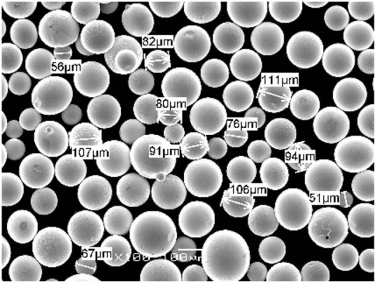
Preguntas más frecuentes
He aquí una rápida sección de preguntas frecuentes para responder a algunas de las dudas más comunes:
| Pregunta | Respuesta |
|---|---|
| ¿Cuál es la temperatura máxima que pueden soportar estos lechos de construcción? | Depende del material, pero por lo general, los lechos de fabricación de alta temperatura pueden soportar temperaturas de hasta 400 °C o más. |
| ¿Puedo utilizar un lecho de impresión de alta temperatura para la impresión 3D estándar? | Sí, pero podría ser excesivo a menos que imprima con materiales de alta temperatura como PEEK, Ultem o metales. |
| ¿Cómo mantengo mi lecho de construcción de alta temperatura? | La limpieza y la inspección periódicas en busca de desgaste o daños son cruciales. En el caso de los lechos metálicos, puede ser necesario repasarlos de vez en cuando. |
| ¿Existe una diferencia significativa en la calidad de impresión? | Por supuesto La base de impresión adecuada puede mejorar drásticamente la adherencia de la impresión, reducir el alabeo y conseguir impresiones más suaves y precisas. |
| ¿Merecen la pena las camas de alta temperatura? | Si trabaja con materiales de alta temperatura o necesita precisión en aplicaciones industriales, la inversión merece la pena. |
| ¿Puedo reequipar una impresora estándar con un lecho de impresión de alta temperatura? | Sí, pero asegúrese de que el firmware y el hardware de su impresora pueden soportar el aumento de la carga térmica. |
| ¿Necesitan estas camas adhesivos especiales? | Algunos materiales pueden requerir adhesivos específicos, mientras que otros dependen de la textura o el revestimiento de la superficie para adherirse. |
| ¿Cuánto duran estas camas de obra? | Con un mantenimiento adecuado, las camas de construcción para altas temperaturas pueden durar años, pero esto depende del material y de la frecuencia de uso. |
Conclusión
Los lechos de impresión de alta temperatura son un componente vital para cualquiera que se dedique a la impresión 3D industrial o de alto rendimiento. Tanto si imprime con PEEK, Ultem, metales u otros materiales exigentes, estas bases ofrecen la estabilidad térmica, la durabilidad y la precisión necesarias para lograr resultados de primera categoría. Invertir en la ensamblaje de la bancada de alta temperatura no sólo garantiza una mejor calidad de impresión, sino que también prolonga la vida útil de la impresora y reduce la frecuencia de impresiones fallidas. Con la amplia gama de materiales y configuraciones disponibles, hay un conjunto de bancada de alta temperatura adecuado para cada aplicación, por lo que es una consideración crucial para cualquier configuración de impresión 3D seria.

